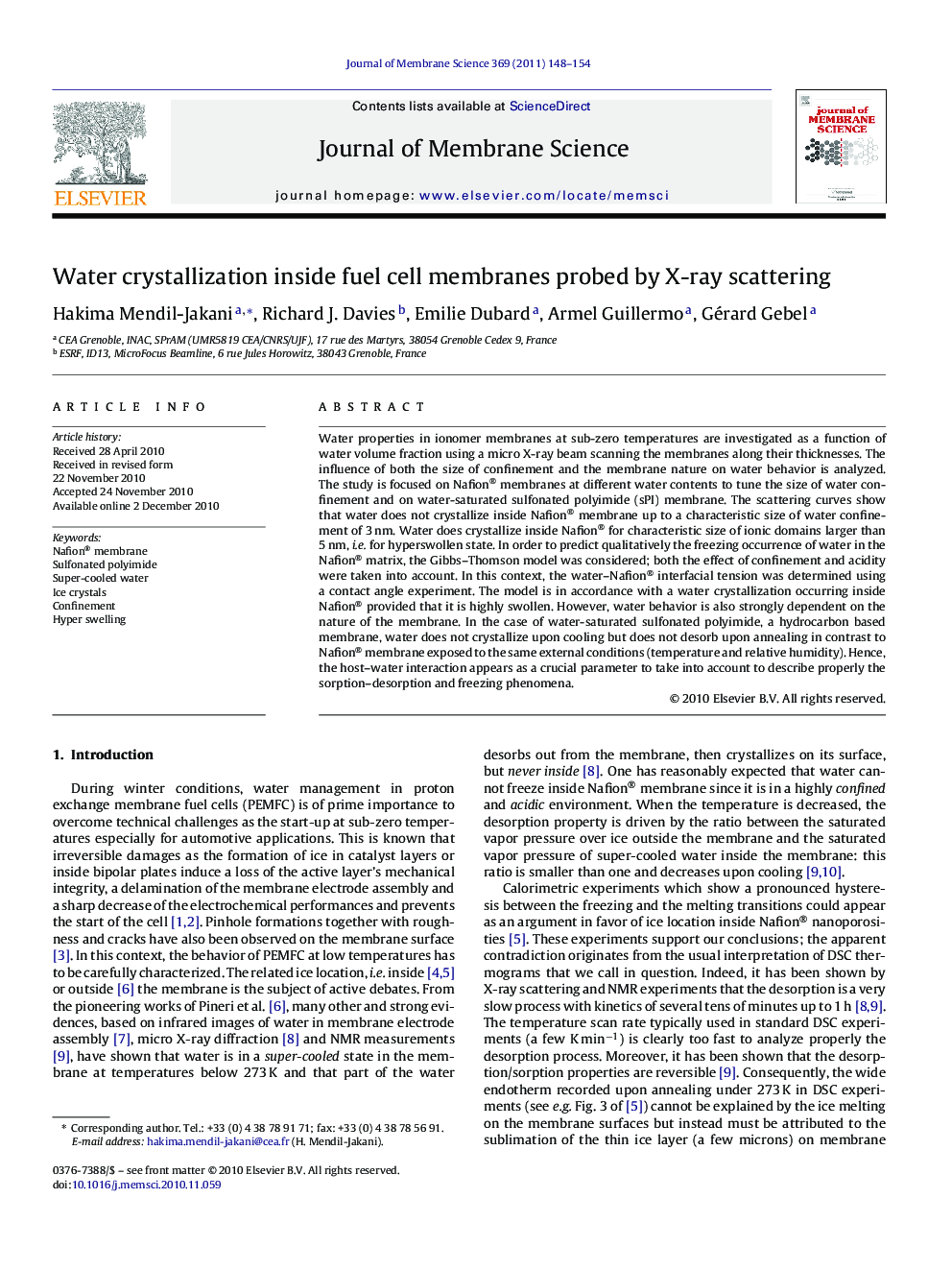| Article ID | Journal | Published Year | Pages | File Type |
|---|---|---|---|---|
| 635955 | Journal of Membrane Science | 2011 | 7 Pages |
Water properties in ionomer membranes at sub-zero temperatures are investigated as a function of water volume fraction using a micro X-ray beam scanning the membranes along their thicknesses. The influence of both the size of confinement and the membrane nature on water behavior is analyzed. The study is focused on Nafion® membranes at different water contents to tune the size of water confinement and on water-saturated sulfonated polyimide (sPI) membrane. The scattering curves show that water does not crystallize inside Nafion® membrane up to a characteristic size of water confinement of 3 nm. Water does crystallize inside Nafion® for characteristic size of ionic domains larger than 5 nm, i.e. for hyperswollen state. In order to predict qualitatively the freezing occurrence of water in the Nafion® matrix, the Gibbs–Thomson model was considered; both the effect of confinement and acidity were taken into account. In this context, the water–Nafion® interfacial tension was determined using a contact angle experiment. The model is in accordance with a water crystallization occurring inside Nafion® provided that it is highly swollen. However, water behavior is also strongly dependent on the nature of the membrane. In the case of water-saturated sulfonated polyimide, a hydrocarbon based membrane, water does not crystallize upon cooling but does not desorb upon annealing in contrast to Nafion® membrane exposed to the same external conditions (temperature and relative humidity). Hence, the host–water interaction appears as a crucial parameter to take into account to describe properly the sorption–desorption and freezing phenomena.
Research highlights▶ Water crystallization inside fuel cell membranes probed by X-ray scattering. ▶ Experimental observation of ice inside Nafion® for hyperswollen state. ▶ The prediction of water freezing by the Gibbs–Thomson model. ▶ Host–water interaction controls the sorption–desorption and freezing phenomena.
